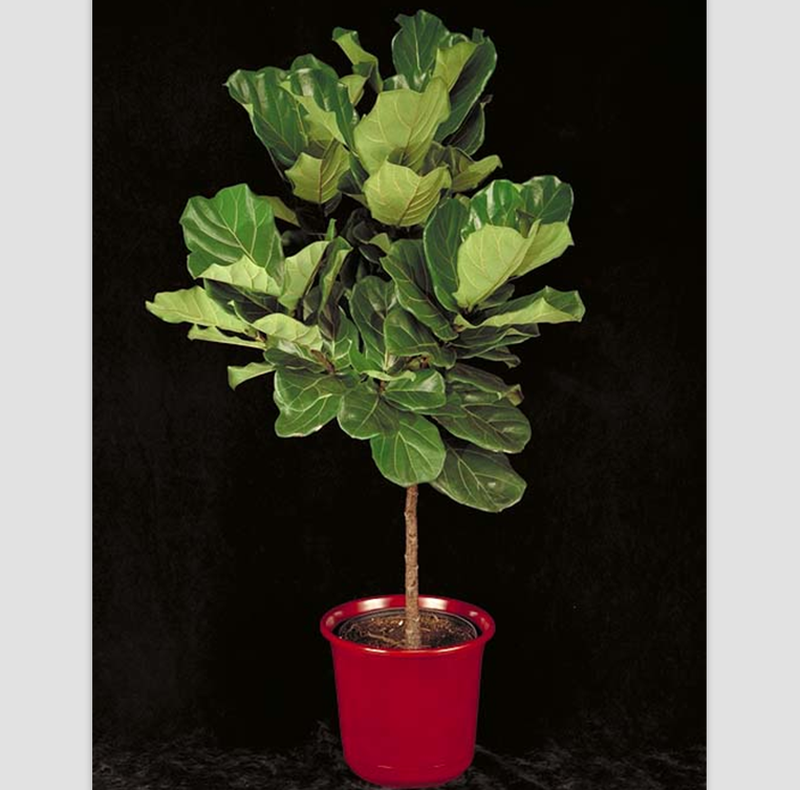The fiddle leaf fig tree, also known as the Ficus Lyrata is a plant perfect for the indoors. It has large, violin-shaped and heavily veined leaves that tend to have upright growth. The fiddle leaf fig tree is a species that is native to the tropics as they require conditions to be wet and warm. This then tends to make it difficult for the average home grower to plant as they require conditions which are difficult to emulate. The fiddle leaf fig tree however, are plants that are adaptable and tough and can thrive in conditions that are less than perfect for them.

Fiddle Leaf Fig Tree Basics
Varieties
There has been a lot of work done to produce a superior Fiddle leaf fig tree. The bulk of the research has been on trying to reduce the plant size with ever increasing leaf size. The Compacta are a variety that are more compact in size and have a much more bushy appearance. The most common fiddle leaf fig tree in trade is the F. lyrata.
Light
They require a lot of filtered bright light. They can tolerate direct sun as well for a limited time. These plants overall require ample light and the specimen that is placed in the dark will fade away quickly.
Water
These plants are tropical by nature. So these plants require plenty of moisture. They should not be left to stand for too long in water or their leaves will fall off, but they should be given plenty of water.
Soil
They are not choosy in terms of soil. Preferably a nitrogen rich soil, else any soil will do them well as long as it is drained well enough.
Fertilizer
The Fiddle leaf fig tree does not require any sort of excessive fertilizer use. They only should be fed with a weak dosage of liquid fertilizer during their growing season and that is about all they need.
Fiddle Leaf Fig Tree Care Tips
Watering
How often your plant would need watering would depend on the pot size of the plant. You would want to water when you can feel the top soil has become dry. This can be judged by sticking your finger into the soil and judging. The humidity and the temperature of the plants surroundings determine how quickly it needs to be watered. You can judge the average time it is taking for the topsoil to dry and then water your plant accordingly. Do remember to pay heed during the summer months and be ready to change the schedule as the seasons change.
The plant should be given ample moisture. These plants cannot sustain high levels of salt so flush out the pots monthly.
Cleaning the leaves
The fiddle leaf fig tree should be kept clean, especially the leaves. As dust impacts the plants absorption ability but there would need to be a significant amount of dust accumulated before that happens. Dust also interferes with the plants breathing. This can cause bacteria and fungi to prosper and lead to the plant becoming diseased. Wash your plant with a damp cloth and you can use a duster as well. This will do the trick of keeping your plant moist. Do not hose them too often. If you are going to hose them use water that is lukewarm and do it on a sunny day.
Spotting on leaves
The complaint that is heard over and over again is the spotting on the leaves. The fiddle leaf is a large leaved plant so any spotting is easily noticeable. The spotting is a result of Injury that could be both due to mishandling or mite attack. The sap of the fiddle leaf is mildly caustic, leading to brown spots when exposed to air. There are also a variety of fungal diseases that can lead to spotting on the leaves.
In order to prevent these attacks the plants should be well trimmed and dead leaves and twigs should be removed promptly. Pests like the mites, mealy, aphids and white fly all cause damage to Fiddle leaf fig trees so try and treat them with the least toxic option available to you.
Leaf drop
If your plant is exposed to too much cold or warm air and it watered more than required the result will be dropping leaves. The best solution to this is to mimic their natural habitat as much as possible, which is a moist tropical climate.
Repotting
These plants should be repotted annually. The healthy specimens grow fast and have aggressive roots. The plants should be placed in new containers to repot and the top soil should be replaced with fresh potting soil.
Root prune
After some time you can root prune your Fiddle leaf fig tree. Remove the plant and slice off an inch of the root from all sides. Then prune the plant and place it in the pot you took it out from with fresh topsoil.
Advice on buying
The Fiddle leaf fig tree is a great addition to your collection. Try and buy the healthiest specimen you can find. It will have green leaves with no spots or pests. Do not hesitate to get down and dirty whilst inspecting after all you’re making an investment. The fig plans are beautiful long lived indoor trees and if treated properly they will give you joy for years.
What about propagation?
It is generally advisable to buy a new fiddle leaf plant. They can be propagated from stem cuttings, though they resulting plants are not of superior quality. The commercial methods of propagation have led to much more consistent and higher quality plants than the home propagated due to the use of cloning.
Video-- Tips for Caring Fiddle Leaf Fig Tree:

View All Comments /Add Comment